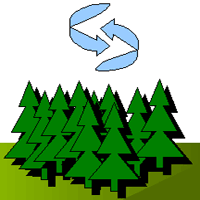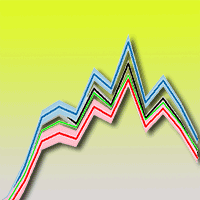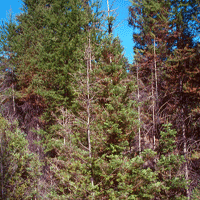
Ozone flux modelling for risk assessment: status and research needs
iForest - Biogeosciences and Forestry, Volume 2, Issue 1, Pages 34-37 (2009)
doi: https://doi.org/10.3832/ifor0485-002
Published: Jan 21, 2009 - Copyright © 2009 SISEF
Short Communications
Collection/Special Issue: Cost Action E29 Meeting 2008 - Istanbul (Turkey)
Future Monitoring and Research Needs for Forest Ecosystems
Guest Editors: Marcus Schaub (WSL, Birmensdorf, CH)
Abstract
In this paper, some shortcomings involved in the modelling of ozone fluxes in the context of local-scale risk assessment are discussed, especially as related to the data collected within the International Co-operative Programme on Assessment and Monitoring of Air Pollution Effects on Forests (ICP Forests). An enhanced monitoring strategy, that would provide a sounder basis for the development, validation and application of risk assessment modelling tools, is also suggested.
Keywords
Authors’ Info
Authors’ address
Finnish Meteorological Institute, Climate Change Research, P.O. Box 503, FI-00101 Helsinki, Finland
Corresponding author
Paper Info
Citation
Tuovinen J-P (2009). Ozone flux modelling for risk assessment: status and research needs. iForest 2: 34-37. - doi: 10.3832/ifor0485-002
Academic Editor
Marcus Schaub
Paper history
Received: Mar 13, 2008
Accepted: Dec 09, 2008
First online: Jan 21, 2009
Publication Date: Jan 21, 2009
Publication Time: 1.43 months
Copyright Information
© SISEF - The Italian Society of Silviculture and Forest Ecology 2009
Open Access
This article is distributed under the terms of the Creative Commons Attribution-Non Commercial 4.0 International (https://creativecommons.org/licenses/by-nc/4.0/), which permits unrestricted use, distribution, and reproduction in any medium, provided you give appropriate credit to the original author(s) and the source, provide a link to the Creative Commons license, and indicate if changes were made.
Web Metrics
Breakdown by View Type
Article Usage
Total Article Views: 50903
(from publication date up to now)
Breakdown by View Type
HTML Page Views: 42132
Abstract Page Views: 3337
PDF Downloads: 4361
Citation/Reference Downloads: 64
XML Downloads: 1009
Web Metrics
Days since publication: 6189
Overall contacts: 50903
Avg. contacts per week: 57.57
Citation Metrics
Article Citations
Article citations are based on data periodically collected from the Clarivate Web of Science web site
(last update: Mar 2025)
Total number of cites (since 2009): 1
Average cites per year: 0.06
Publication Metrics
by Dimensions ©
Articles citing this article
List of the papers citing this article based on CrossRef Cited-by.
References
Directive 2002/3/EC of the European Parliament and the Council of 12 February 2002 relating to ozone in ambient air. Official Journal of European Communities L 67: 14-30.
Gscholar
Net carbon dioxide losses of northern ecosystems in response to autumn warming. Nature 451: 49-52.
CrossRef | Gscholar
Manual on methods and criteria for harmonized sampling, assessment, monitoring and analysis of the effects of air pollution on forests. Part X: Monitoring of air quality. International Co-operative Programme on Assessment and Monitoring of Air Pollution Effects on Forests, United Nations Economic Commission for Europe (UNECE) Convention on Long-range Transboundary Air Pollution, Geneva, pp. 20.
Online | Gscholar
Manual on methods and criteria for harmonized sampling, assessment, monitoring and analysis of the effects of air pollution on forests. Part VII: Meteorological Measurements. International Co-operative Programme on Assessment and Monitoring of Air Pollution Effects on Forests, United Nations Economic Commission for Europe (UNECE) Convention on Long-range Transboundary Air Pollution, Geneva, Switzerland, pp. 40.
Online | Gscholar
Mapping critical levels for vegetation. Manual on methodologies and criteria for modelling and mapping critical loads and levels and air pollution effects, risks and trends. United Nations Economic Commission for Europe (UNECE) Convention on Long-range Transboundary Air Pollution, Geneva, Switzerland, pp. 254.
Online | Gscholar

















